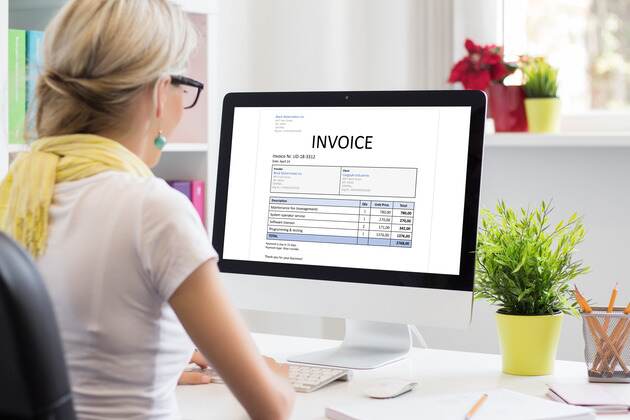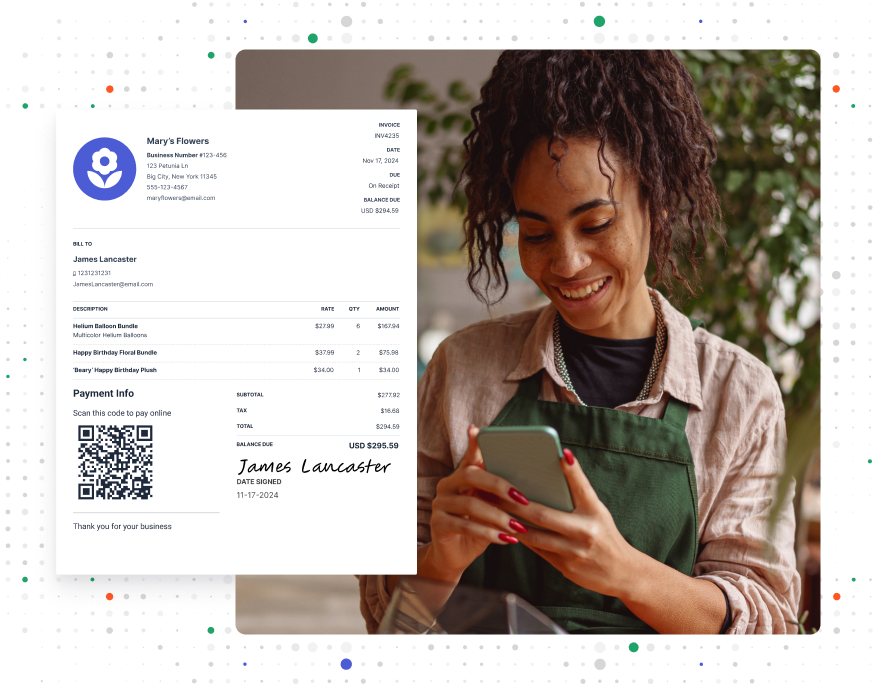Purchase Order Versus Invoice: Differences Explained

Running a business requires a lot of paperwork. And purchase orders and invoices are among the documents you might need.
While they’re vital for buying and selling goods, they serve different purposes. Here’s a guide to purchase orders versus invoices. Learn when and how to write them so you can create and send these documents with success.
What Is a Purchase Order?
Purchase orders, sometimes known as P.O.s, are official requests to buy goods or services. As a business, you might request one when a customer wants to buy something from you. The purchase order includes the items they need, how many, and by what date. It should also have pricing and delivery information.
Once you approve a purchase order, it becomes a legally binding contract. The buyer must pay the price they agreed to, as long as you deliver the requested items. The purchase order provides a paper trail both for you and the buyer, providing clarity in case things go wrong and acting as a record of the purchase.
An effective purchase order should include these details:
- Purchase Date. This is the date the order was placed.
- P.O. Number. Every invoice needs a unique number. The P.O. makes it easy to reference and track the order.
- Information About the Order. The buyer should explain exactly what they’re requesting. It should include a description of the product and services, the quantity you want, and the unit price.
- Buyer and Vendor Details. The buyer should write down their contact details as well as yours.
- Terms of Payment. Specify how much, when, and how the buyer will pay.
- Delivery Address. Explain where you should send your items.
RELATED ARTICLE — What Is a Commercial Invoice?
What Is an Order Invoice?

Invoices are requests for payments. As a seller, you send an invoice or bill after the sale happens. When you deliver goods a buyer ordered, you invoice for the items and ask the buyer to pay the agreed amount.
Both buyers and sellers need invoices for accounting purposes. They help buyers track expenses and document tax-deductible purchases. For sellers, invoices have proof of how much you collected for your records. Invoices also remind buyers what to pay and when.
If you’re writing an invoice, here are some key details to include:
- Invoice Number. Each invoice needs a unique number. An effective invoice numbering system helps you track and record the purchase.
- P.O. Number. If the invoice is the result of a purchase order, include the number here. This confirms the seller fulfilled the order as promised.
- Invoice Date. This is the date you issued the invoice. You need this information to gauge how long the buyer has to pay.
- Total Amount Due. Specify the amount due. Include any taxes or discounts.
- Payment Terms. Explain when and how a buyer must pay. For example, you could require credit card or cash payments. Your invoice might also be net 30, meaning the buyer has 30 days to pay.
- Purchase Details. Include an itemized list of the purchased items the invoice covers. This avoids confusion over outstanding payments and delivered goods.
- Buyer and Vendor Information. Write the name and contact details of both you and the buyer.
RELATED ARTICLE — What Is a P.O. Number on an Invoice?
Understanding the Differences Between a Purchase Order and an Invoice
The main difference between these two documents is that buyers send purchase orders and sellers send invoices. But they’re both important to the purchasing process because they provide order details for both parties, offering the documentation needed for a smooth process.
RELATED ARTICLE — What Is a Sales Invoice & How To Create One in 5 Steps
Purchase Order Versus Invoice: Similarities
What’s more helpful to understanding these documents is to consider how they’re similar. Here is some information commonly included on both purchase orders and invoices:
- Buyer and Vendor Information. Both forms show who is involved in a purchase/sale transaction.
- The Shipping Address. They show where a buyer wants a seller to send purchased items. This is important in case an order ends up in the wrong place and the shipper needs to double-check the location.
- Information About the Items Sold. Both purchase orders and invoices provide specific details about what a buyer ordered.
- Sales Tax. They must include information about whether sales tax is due and how much.
- Sequential Numbers. Purchase orders and invoices include numbers for tracking purposes. The numbers may not be the same, but both should match the buyer’s or seller’s accounting systems.
3 Reasons Why Purchase Orders Are Important for Your Business

To really understand how purchase orders and invoices work, you have to know why they’re important. Here are three reasons why P.O.s should be part of your process:
- They’re an official agreement. Once you accept a purchase order, the agreement between buyer and seller becomes legally binding. You must provide the desired goods or services, and buyers must pay for them. If either doesn’t do so, there’s proof of the agreement, keeping potential resolutions as clear and fair as possible.
- They help you track orders. Buyers can use purchase orders to keep track of what they’ve received from you. They won’t make a mistake and overorder because they forgot they already bought something. And as a seller, you can track upcoming orders and plan your production schedule accordingly.
- They make invoicing simpler. Purchase orders make it easy to invoice. You can see exactly what a customer bought and how much it cost. You can also include the P.O. number on the invoice so it’s easy to find the original order if needed.
RELATED ARTICLE — How To Keep Track of Invoices & Payments: A Comprehensive Guide
Make Invoicing Even Easier
Creating purchase orders and invoices takes time. The good news is you can streamline the process with Invoice Simple.
Invoice Simple lets you save invoice items and client details as you enter them. When customers purchase more from you, you won’t have to type in the same information over and over. And you can edit saved details anytime. Give Invoice Simple a try today to see how these features work for you.
Start Your First
Invoice Today
Create customized and professional
invoices and connect with clients
